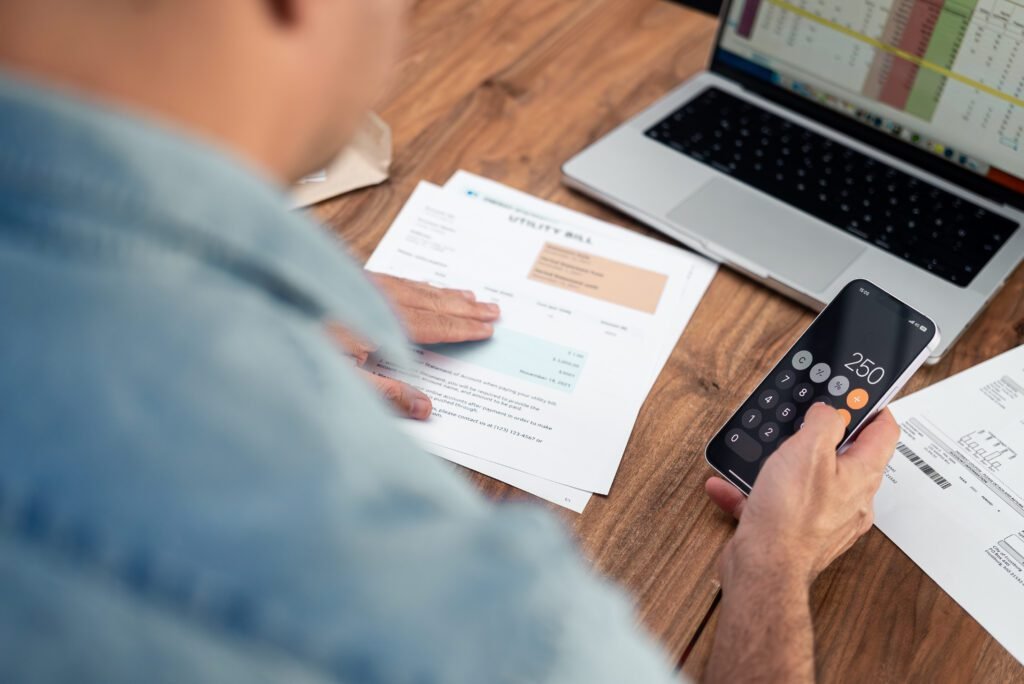
Abdullah Shoaib
Managing Director
4 min read
Last Updated November 06, 2025
How to reduce energy consumption in business
Energy consumption is one of the biggest ongoing costs for businesses. But the good news is that it’s also one of the easiest areas to improve. Small habits like leaving computers or lights on overnight can be costly, wasting both energy and money.
Before you can start saving energy, it’s helpful to pinpoint exactly where it’s going. By looking at where your business uses energy and making simple changes, you can cut waste, lower bills and shrink your carbon footprint – all without disrupting how you work.
How to calculate energy costs for my small business
First it’s important to understand how much energy you’re using and what it’s costing your business.
To calculate your total energy cost:
- Check your energy usage: Look at your electricity or gas bill to find your total usage in kilowatt-hours (kWh).
- Find your unit rate: This is the price charged by your supplier for every single kWh you use. It’s often expressed as pence per kWh (p/kWh) and can be found on your bill or tariff paperwork.
- Multiply usage by cost: Now, simply multiply these two numbers together to find your usage cost: Energy used (kWh) × Cost per kWh = Total cost.
Keep in mind that some bills also include standing charges or additional fees, so check the full bill for a complete picture.
While this gives you the total cost, it doesn’t explain when or why your energy use changes. Factors like business hours, equipment usage and seasonal demand can all affect your consumption.
Using smart meters or energy monitoring software can help you to track your usage in real time and identify patterns or waste.

How to lower energy bills for small businesses
Once you have an idea of your energy consumption, the next step is to reduce it. Small but consistent changes can help you to save money and improve your business’s energy efficiency in the long term.
1. Upgrade to efficient lighting and appliances
Many business owners are surprised by how much energy is used just to keep the lights on and equipment running each day. But there are ways to get this cost down that don’t involve working tech-free or in the dark.
For example, simply switching from fluorescent or halogen bulbs to LEDs can cut lighting costs by as much as 60%. Similarly, upgrading to energy-efficient appliances helps your business to make the most of every unit of power.
2. Review your business energy tariff
Put a note in the calendar to review and compare your business energy tariff yearly; this can be a quick way to make energy savings.
If you need further help and advice with energy for your small business, we can help you to compare prices, switch and manage your account.
3. Improve insulation and heating controls
Adding insulation to your walls, roof and windows helps to keep warm air in during winter and cool air in during summer. This means your heating and cooling systems don’t have to work as hard.
For even more control, install a programmable thermostat or smart controls. These devices automatically adjust the temperature for you, so you can feel comfortable at work without wasting power.
4. Engage your workforce
Getting your employees involved and committed to sustainability is an overlooked way to save energy. You can encourage employees to adopt good habits, such as turning off lights, closing doors and windows or unplugging devices when not in use. If a little push for involvement is needed, provide incentives! These small changes really do add up over the years.
5. Explore renewable and low-carbon options
Switching to renewable energy is a smart way to future-proof your business against market instability. Options like solar panels or a green energy tariff can cut your carbon footprint and protect you from rising fossil fuel prices.
Customers are choosing to support businesses that are making sustainable choices and align with their own values. Being energy efficient is no longer just a clever business decision; it’s an essential one. Cutting down on your energy use will save you money, help to protect the environment and show your commitment to sustainability.
